
Located in Midtown Atlanta, Museum of Design Atlanta (MODA) is presenting Please Be Seated. Switch Modern was delighted to lend a number of designs for this new exhibition.
Switch Modern is delighted to be a sponsor and lender to Museum of Design Atlanta's (MODA) new exhibition, Please Be Seated. This exhibition loosely explores seating design over the past 100+ years with designs by Josef Hoffmann and Eileen Gray from the early 20th century through design in the first quarter of the 21st century including work by Jean-Marie Massaud, Lina Obregon, along with Andres Reisinger and Julia Esque.
Switch Modern loaned a total of 16 designs that illustrate many of the salient design movements within the 20th century that were informed by new materials and new technologies including Vienna Secession, International Style, Organic Design, Pop/Radical Design, Minimalism/Neo Bauhaus along with Post Modernism and the associated Pluralism and Derivatism of the late 20th and early 21st centuries.

A panorama view of part of the Please Be Seated exhibition. Switch Modern loaned 16 seating designs for this exhibition - the earliest design is Josef Hoffmann's Villa Gallia sofa (1913); the most recent design is Andres Reisinger and Julia Esque's Hortenisa lounge chair (2021).

Two chair designs by Eileen Gray from the early 20th century. The first version of Gray's Bibendum lounge chair was developed in the early 1920s as Gray was creating the acclaimed interior of Parisian milliner, Madame Lévy. Gray's Roquebrune dining chair was created for the designer's Castellar home. First designed as an outdoor piece in the late 1920s with canvas seat and back, Gray reworked the design in saddle leather in the early 1930s.
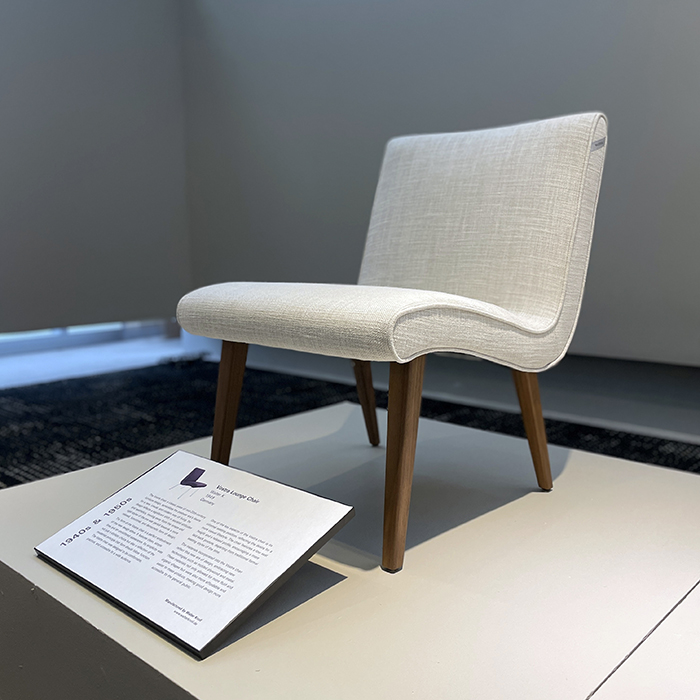
In addition to several iconic American midcentury designs by Charles and Ray Eames as well as Eero Saarinen that MODA included as part of its Please Be Seated exhibition, Switch Modern provided a couple of European midcentury designs created by German manufacturer Walter Knoll including the iconic armless Vostra lounge chair from 1949. with its sensuous curves and splayed legs, it embodies many of the salient characteristics of midcentury organic design.
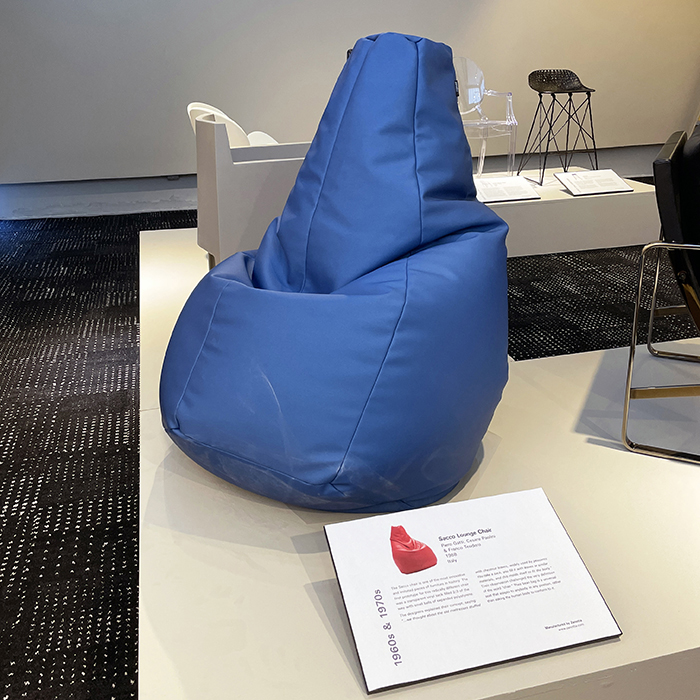
One of the most important designs of the late 1960s is Zanotta's much-loved Sacco lounge chair. Included in the permanent collections of 27 museums worldwide, Sacco is simply a sac filled with polystyrene pellets that conforms to the sitter. It has no time-honored historic references to a chair (seat, back, legs, arms) - indeed, this "sculptural form" only becomes a chair when someone uses it as such. It became one of the most mercilessly copied 20th century designs - the copies marketed as the ubiquitous "bean bag" chair.
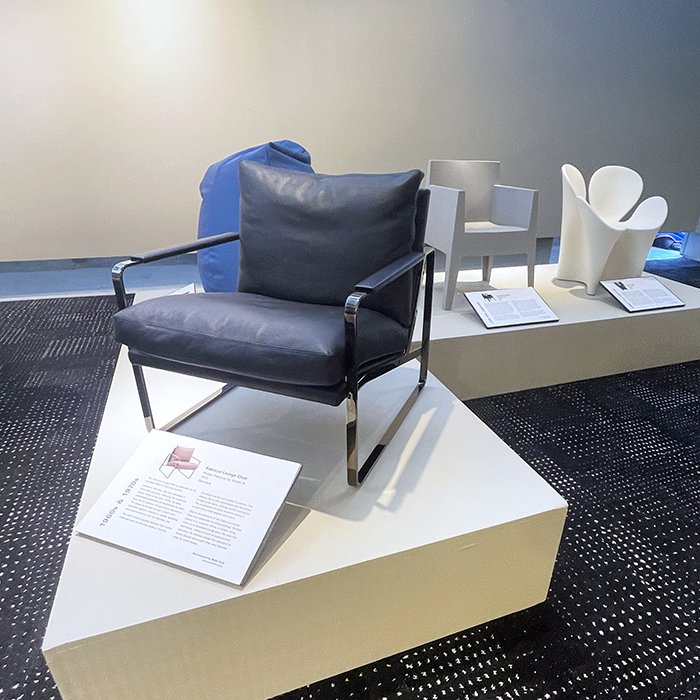
Foreground: Super comfortable and luxe, the Fabricius lounge chair gets its moniker from its designer, Preben Fabricius. Designed in 1972, this lounge chair's form channels two important lounge chair designs from the 1920s - Marcel Breuer's Wassily (1925) and Mies van der Rohe and Lilly Reich's Barcelona (1929). The early 1970s saw a tremendous interest in Bauhaus designs from the 1920s. This Neo-Bauhaus movement paralleled the minimalist aesthetic associated with contemporary designs in the 1970s. Background: Two fabulous dining chair designs - Philippe Starck's Toy (1998) and Ron Arad's Clover (2006) employ rotation-molding technology to create their forms in plastic. Their creation in this material allows their use inside or outdoors.
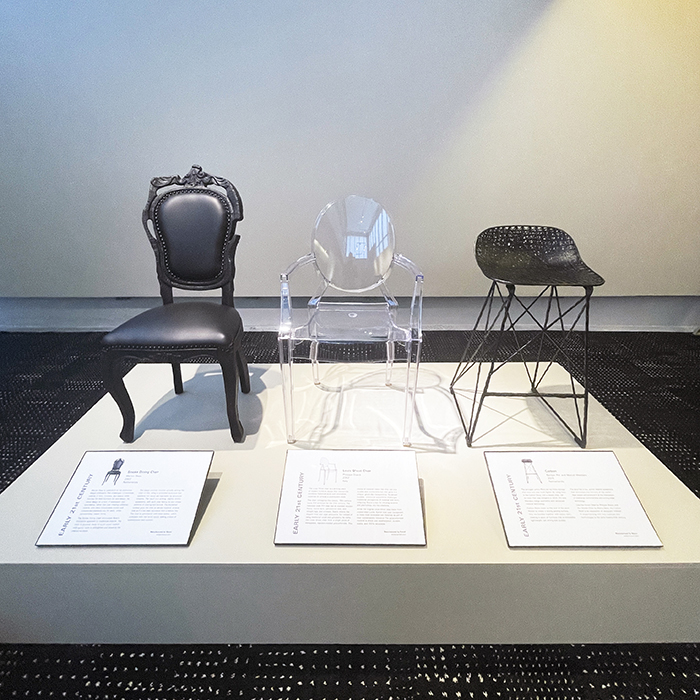
From left to right: Maarten Baas' Smoke dining chair (2002), Philippe Starck's Louis Ghost dining chair (2002), and Bertjan Pot and Marcel Wander's Carbon stool (2015; based upon the designers' chair version from 2004).
A new millennium, new materials and technologies! Louis Ghost features the innovative use of polycarbonate to create furniture that has an aesthetic like transparent glass except it is lightweight and is designed to flex. The Carbon stool is manufactured with carbon fiber can be lifted with a single finger - lightweight but incredibly strong and durable. Smoke features an old technology used in a new way... fire! This range of seating uses fire to achieve its dramatic, charred aesthetic. Designer Maarten Baas developed a technology that structurally stabilizes the form after it has been burned.
Curiously, in the process of creating their very early 21st century designs, Starck and Baas looked back at seating forms that were popular in the 18th century.
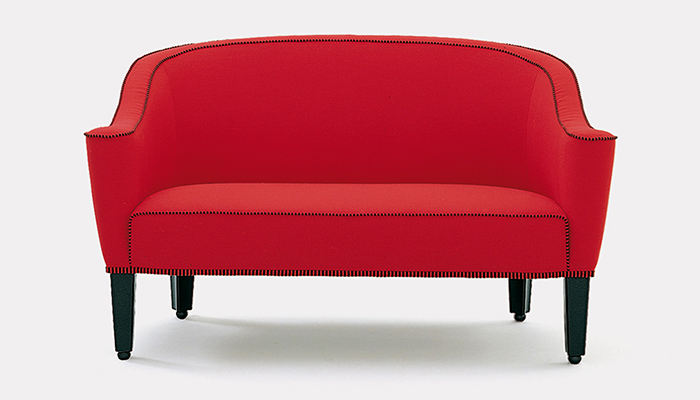
Josef Hoffmann's Villa Gallia sofa designed in 1913 and currently produced under license by Wittmann, Austria.
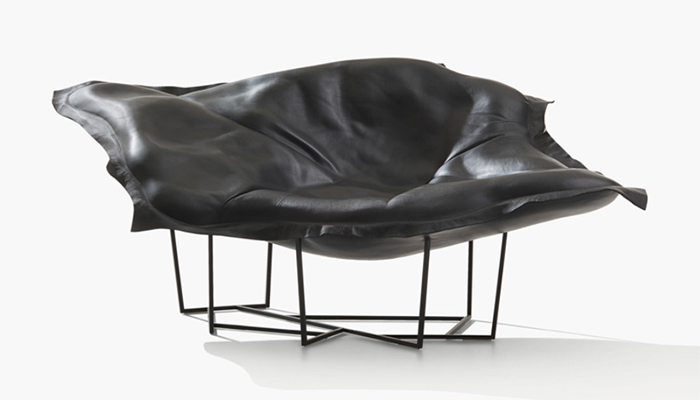
Jean-Marie Massaud's Wallace lounge designed in 2009 and produced by Poliform, Italy.
These two pieces with similar footprints were paired together in the exhibition to create a number of talking points not only about their similarities but to reinforce the dramatic aesthetic shifts that resulted in how designers have rendered form over the past nearly 100 years that separate the designs. When Hoffmann created the interiors for the Gallia family in Vienna, he designed this sofa specifically for their residence - indeed, the piece was truly "site-specific." The seating expanse features a sensuously curved form that has been objectified through the designer's use of striped piping. The legs culminate in decorative spheres that figure prominently as a design element in Hoffmann's work from the early 20th century. Villa Gallia's resulting aesthetic in the context of 1913 would have been novel - the piece would have been unique to the Gallia Family's residence. Like Villa Gallia, Wallace lounge features a seating expanse and a base support - both are radically different in form and were enabled by materials and technology that were developed later in the 20th century. This super-sculptural design features 3D modeled synthetic foam in between two layers of thick leather - the pieces of leather are affixed around the perimeter. The resulting seating expanse is ultimately unique to each Wallace lounge chair produced.
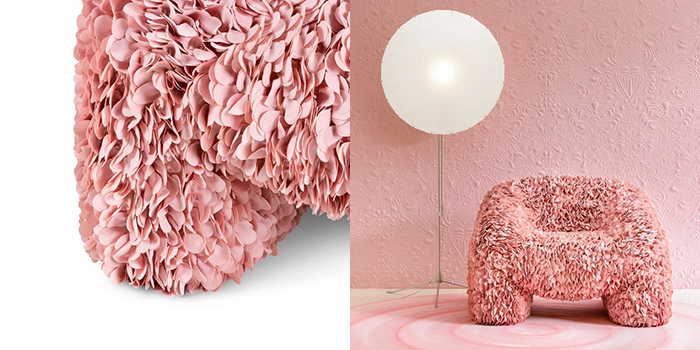
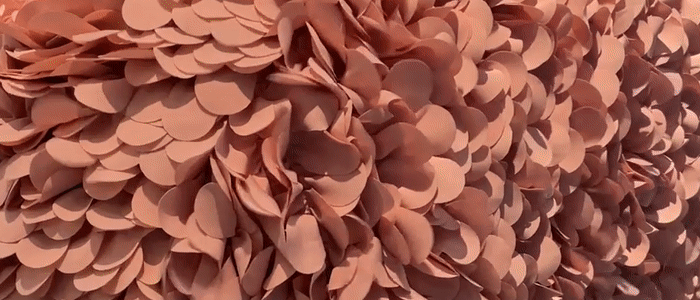
Hortensia lounge chair was designed by Andres Reisinger & Julia Esque. With upholstery composed of 20,000 "petals," the Hortensia lounge chair uses innovative technology and materials to create a thoroughly novel seating aesthetic that was inspired by its namesake flower. The chair started out as a 3D rendering in 2018 that quickly went viral on social media. Even though the chair didn't physically exist, its sheer novelty prompted multiple orders. In 2021, Dutch manufacturer Moooi provided the mechanism to initiate serial production of the design.
Switch Modern has been delighted to participate in the Please Be Seated exhibition at Museum of Design Atlanta (MODA). The exhibition will be on view through March 10, 2024. For more information about the exhibition, please click here. If you are interested in ordering or acquiring any of the pieces that Switch Modern has loaned to the exhibition or any of the brands that we represent, please contact us at 404-605-0196 or info@switchmodern.com.